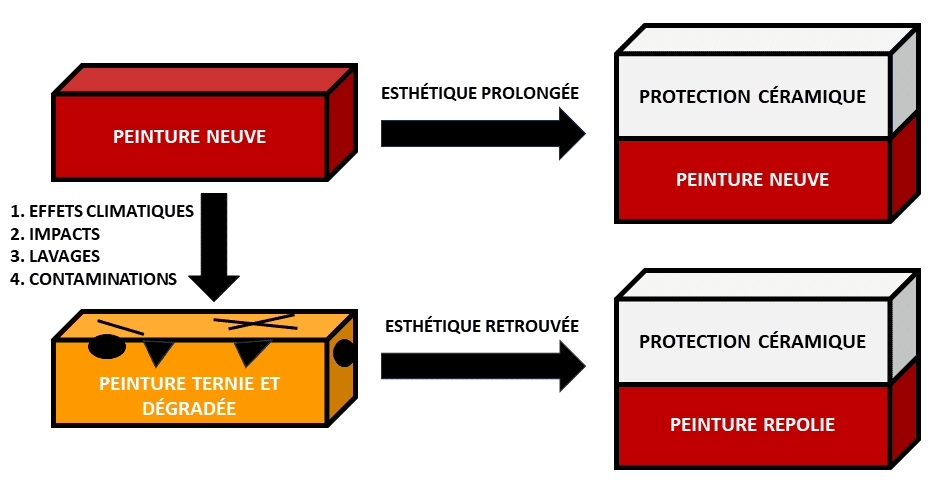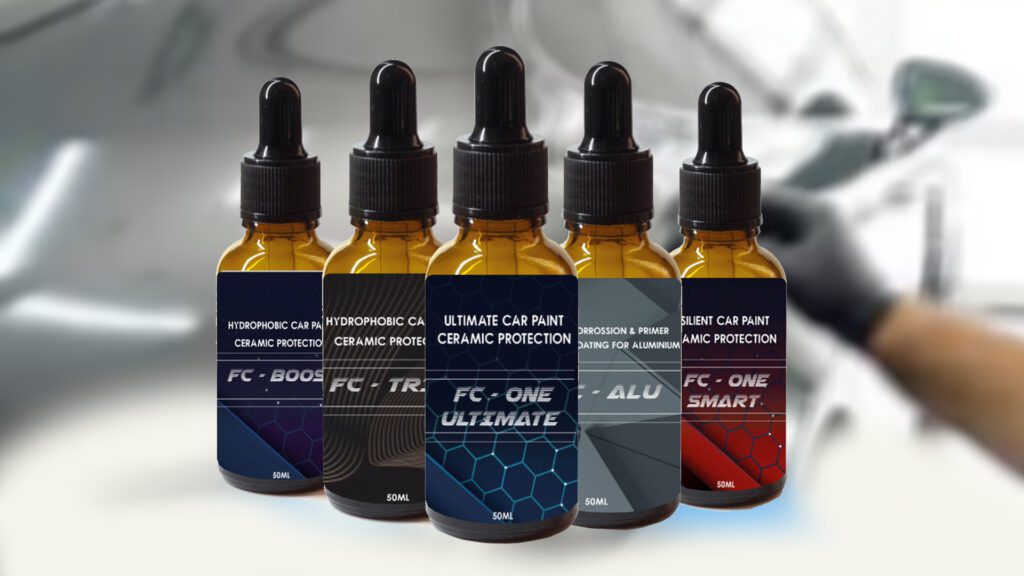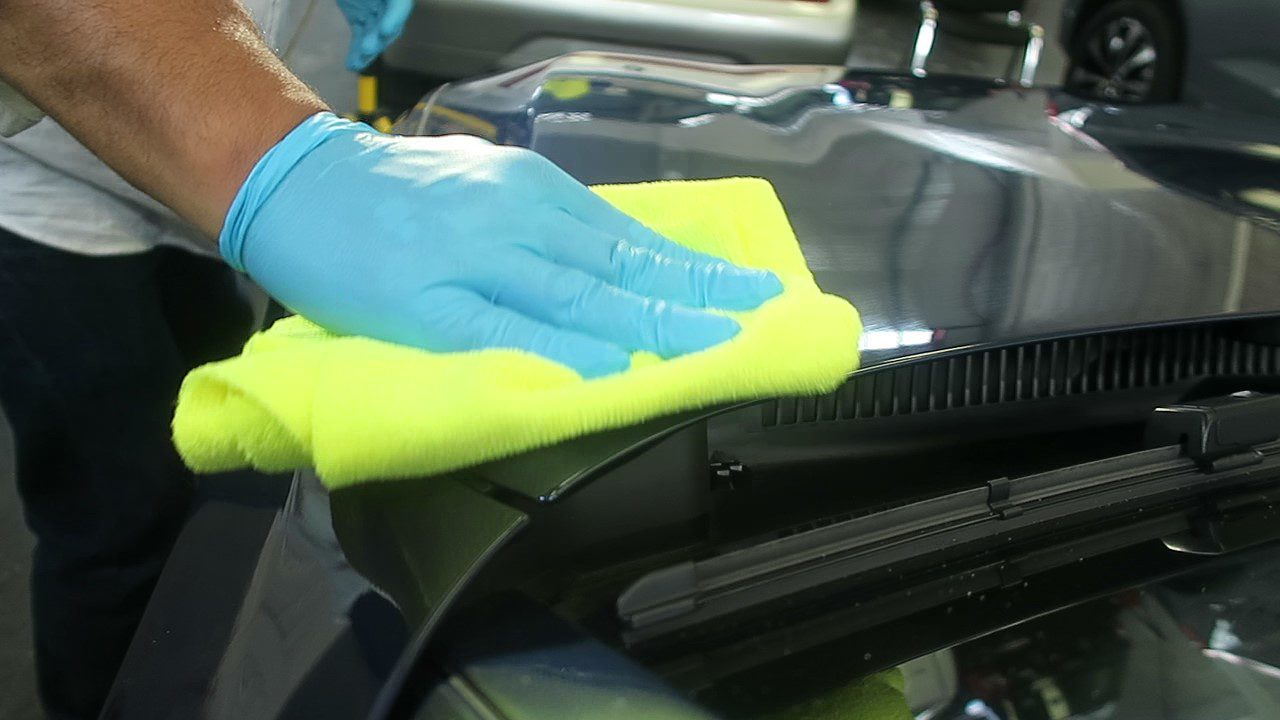What is a ceramic coating?
In general, a ceramic coating is a second skin that is deposited on a surface, forming a protective barrier.
The ceramic coating fills the porosity of the surface and forms a uniform film which improves the resistance of a material against environmental attacks (chemical exposure, temperatures, UV irradiation, etc.) or mechanical stresses related to its handling.
The aesthetic properties of the surface are preserved, even improved for certain surfaces. The ceramic coating repels water and UVs and reduces the adhesion of dirt and pollutants, also facilitating cleaning. In addition, depending on their “hardness” they can protect against minor scratches and impacts.

On the other hand, the performance of ceramic coatings will depend essentially on their adhesion to the materials to be protected and the chemical and physical resistance of the ingredients constituting them. As such, not all ceramics are created equal and the vast majority of commercially available ceramic coatings are so-called sacrificial coatings, which have limited lifespans, typically from a few months to a maximum of 2 years.
The ceramic coatings proposed for the protection of surfaces in the automotive field are composed of silicon-based minerals alone or in combination with organic resins.
Ceramic coatings are applied by wiping or spraying to form layers with thicknesses generally between 100 nm and 2 microns.
The major difference between the various ceramic coatings currently commercially available relates on the employed chemistries, which defines the critical properties of a coating on a substrates namely: ADHESION, HARDNESS, CHEMICAL and PHYSICAL RESISTANCES, ultimately its DURABILITY.


